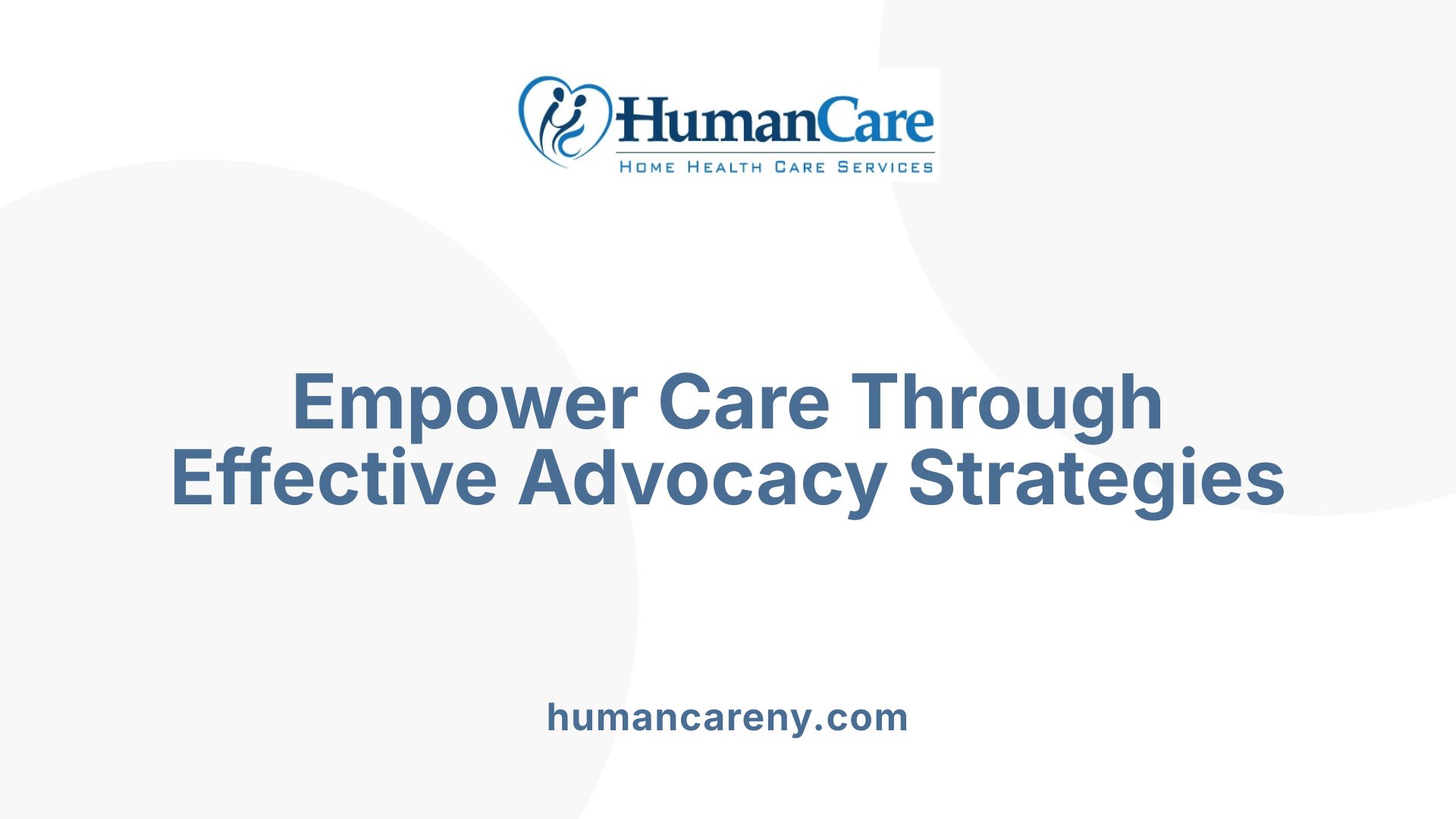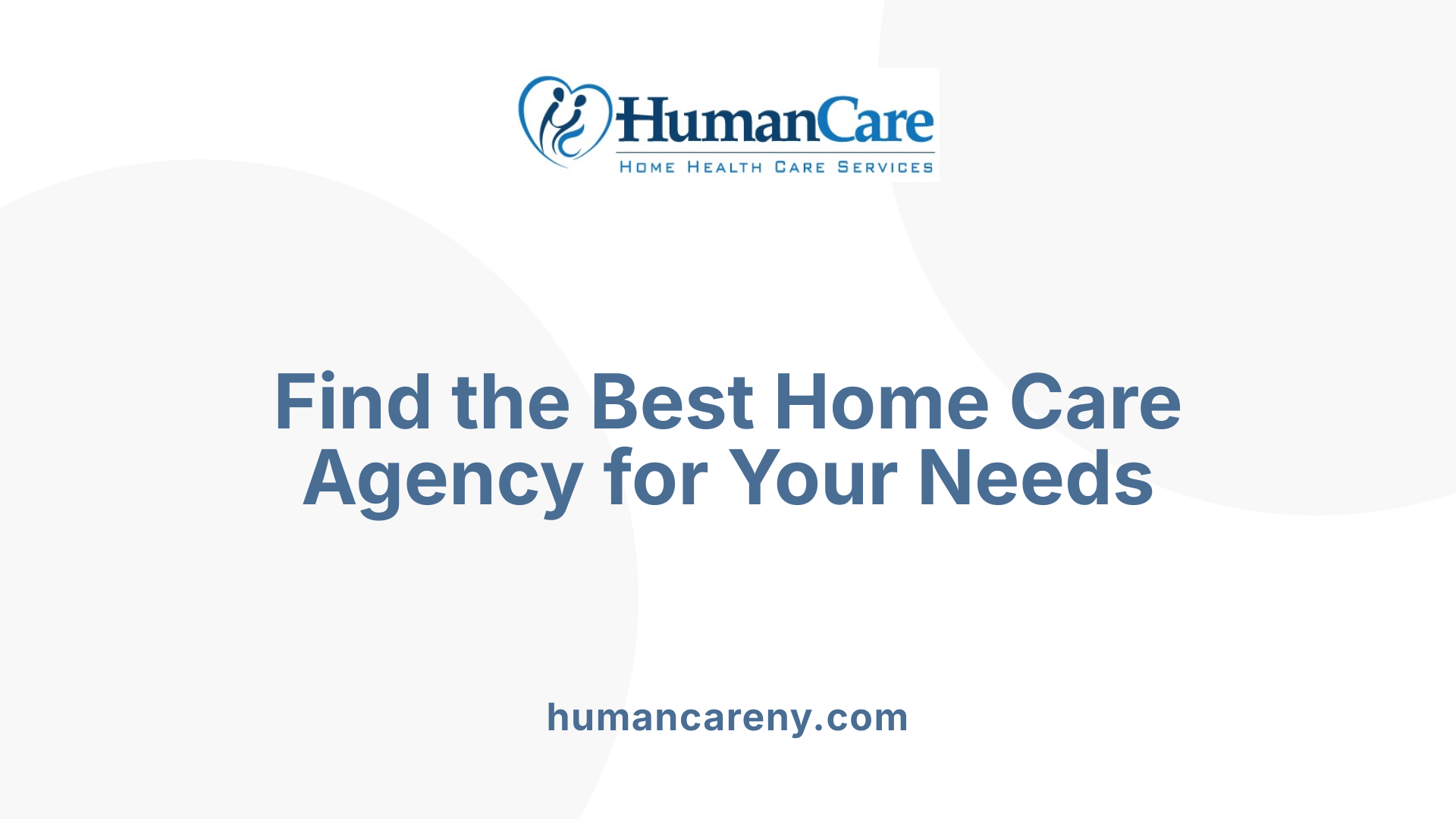How to Advocate for Your Loved One’s Needs in CDPAP Programs
Empowering Family Advocacy in CDPAP Services

Understanding the Role of Advocacy in CDPAP
In the realm of healthcare services, advocating for a loved one's needs becomes crucial, especially in programs designed to offer personalized care, such as the Consumer Directed Personal Assistance Program (CDPAP). This program not only empowers care recipients to select their caregivers but also demands active participation and advocacy from family members to maximize its benefits. This article delves into practical strategies, roles, and insights essential for effective advocacy within CDPAP, ensuring your loved one's care aligns with their needs and preferences.
Navigating CDPAP: An Overview of Caregiver Eligibility and Enrollment
Eligibility criteria for care recipients and caregivers
CDPAP (Consumer Directed Personal Assistance Program) allows individuals to choose their own caregivers, which can include family members. To qualify, the care recipient must:
- Be enrolled in the Medicaid program.
- Require home care services due to a medical need.
- Possess the capacity to manage their care or have a designated representative to assist.
For caregivers, the requirements are:
- Must be at least 18 years old.
- Legally authorized to work in the U.S.
- Pass specified health screenings and background checks.
These criteria ensure that caregivers are adequately prepared and capable of providing necessary support.
Enrollment process for CDPAP
The enrollment process for CDPAP involves several essential steps:
- Determine Eligibility: Verify that both the care recipient and caregiver meet the necessary criteria.
- Apply: Submit an application through a local Medicaid office or CDPAP agency.
- Select a Fiscal Intermediary: Choose an organization that will handle payroll and other administrative tasks.
- Recruit Caregivers: The care recipient, or their representative, recruits and hires caregivers according to personal preferences.
- Develop a Personalized Care Plan: Create a care plan that outlines the specific services and support needed.
This structured process allows families to gain the flexibility and control they desire while ensuring compliance with Medicaid requirements.
Can I use CDPAP to care for a family member, like my husband?
Yes, you can use CDPAP to care for a family member, such as your husband. The CDPAP is specifically designed to allow participants the autonomy to select their caregivers—from family members to friends—provided they fulfill the needed eligibility criteria. This program not only enhances the sense of independence but also fosters personal relationships through familiar caregiving.
The Pillars of Advocacy in CDPAP

What does it mean to advocate for a patient in the CDPAP?
Advocating for a patient in the Consumer Directed Personal Assistance Program (CDPAP) means ensuring that the patient's unique needs, preferences, and concerns are effectively communicated to their healthcare team. Caregivers play a vital role by acting on behalf of the patient, facilitating discussions about treatment options and care strategies. This advocacy promotes the patient's voice in the decision-making process, allowing them to feel empowered and informed.
Effective advocacy also encourages patients to engage in self-advocacy, urging them to take an active role in understanding their conditions and treatment choices. This two-pronged approach—a mix of caregiver support and patient empowerment—strengthens the healthcare experience.
However, challenges can arise, such as communication barriers that can hinder effective dialogue. Caregivers need to be proactive in overcoming these issues, perhaps by asking clarifying questions or scheduling regular check-ins with medical professionals. This ensures that patients' voices are not only heard but also prioritized.
Importance of clear communication with the healthcare team
Establishing open lines of communication between family members, caregivers, and the healthcare team is crucial for effective advocacy. Regular discussions help clarify the patient’s needs and preferences, allowing for more personalized care.
Here are several strategies for enhancing communication:
| Strategy | Description | Benefit | |-------------------------------|--------------------------------------------------------------------------------------|------------------------------------| | Preparation for Visits | Prior to healthcare appointments, review the care plan and prepare notes.| | Ensures that discussions are focused and efficient. | | Be Present and Observant | Attend visits whenever possible and note symptoms or changes in condition.| | Provides valuable context for healthcare providers. | | Ask Questions | Don’t hesitate to seek clarification from medical professionals.| | Promotes comprehensive understanding of care plans. | | Establish Relationships | Foster connections with healthcare providers for better communication.| | Enhances trust and collaboration in care. |
Through these approaches, caregivers can build a solid advocacy foundation, ensuring that the rights, needs, and preferences of those in the CDPAP are prioritized.
Ultimately, advocacy in CDPAP is not just about speaking up; it’s about fostering a collaborative environment where everyone involved works together for the best outcomes.
Practical Strategies for Advocacy within CDPAP

How can I effectively advocate for a loved one in the CDPAP?
To effectively advocate for a loved one in the CDPAP, begin by engaging in open and proactive communication with healthcare professionals. Nurses are often a great resource; they hold valuable information about patient care and safety. Ask questions about your loved one’s care plan and ensure clarity on any medical terms or procedures.
Maintaining accurate records of medical information
Keeping a detailed journal can greatly enhance your advocacy efforts. This should include:
- Medication Information: List all medications, dosages, and purposes.
- Allergies: Document any allergies to avoid medication errors.
- Healthcare Contacts: Note the names and contact numbers of medical staff responsible for your loved one’s care.
Addressing and preventing medication errors
Stay vigilant about your loved one’s medications. Whenever you notice a prescribed medication:
- Clarify its purpose and side effects with the healthcare team.
- Regularly update the medical staff about any allergies or changes in condition.
- Always double-check that your loved one receives the correct medication at the prescribed times.
Emotional Support and Orientation
Providing emotional support is just as crucial as managing medical advocacy. Create a comforting environment for your loved one by introducing familiar objects that can help them feel oriented. Offer reassurance regularly, especially if they seem confused or anxious.
In summary, effective advocacy in CDPAP hinges on clear communication, meticulous organization, and genuine emotional support for your loved one.
Roles and Responsibilities: Family Members as Advocates and Supporters
Family members as emotional anchors
Family members play a pivotal role in supporting their loved ones participating in the Consumer Directed Personal Assistance Program (CDPAP). Acting as emotional anchors, they provide essential emotional support that contributes significantly to the mental well-being of their loved ones. This emotional stability fosters a comforting environment, helping individuals cope with the challenges related to their health.
Collaboration with caregivers for personalized care
Family involvement goes beyond emotional support; they act as collaborative partners with caregivers. By sharing insights about their loved one's preferences, family members enable caregivers to tailor their approach to meet unique needs. This collaboration not only enriches the care experience but also enhances the quality of care delivered.
In addition, family members can help navigate the complexities of available resources in CDPAP. Having a firm understanding of support services and benefits allows them to advocate effectively for their loved ones, ensuring that all necessary care provisions are met. By preparing for visits and maintaining clear communication with caregivers, they can ensure that every aspect of the care plan is adhered to, ultimately maximizing the benefits of the CDPAP program.
Navigating and Maximizing CDPAP Resources

Understanding available CDPAP resources
Navigating the landscape of the Consumer Directed Personal Assistance Program (CDPAP) can feel overwhelming, but knowing what resources are available can streamline the process. Family members play a vital role as advocates, ensuring that their loved ones' needs and preferences are effectively communicated to caregivers. This partnership is essential in accessing the tailored support services and benefits within CDPAP.
Here's a brief overview of the main resources available:
- Local CDPAP agencies: These agencies help facilitate enrollment, connect families with caregivers, and assist with care plans.
- Advocacy organizations: Groups like the Caregiver Action Network educate families on navigating the program and advocate for improvements in funding and access.
- Government websites and resources: Official Medicaid websites and state regulations provide detailed information about eligibility and application processes.
Accessing support services and benefits
Family support can enhance the experience for both caregivers and recipients within the CDPAP. One of their key roles involves connecting to necessary support services. Here are a few tips for accessing those benefits:
- Obtain a HIPAA release: This allows family members to access vital medical information, empowering them to make informed decisions about care.
- Stay informed about financial assistance: Families may explore reimbursement options or financial credits related to caregiving activities, optimizing their benefits.
- Regular communication with healthcare providers: Keeping open dialogues with caregivers and healthcare professionals fosters coordinated care and helps in addressing any concerns promptly.
By leveraging these resources and actively engaging in the process, families can ensure their loved ones receive comprehensive, personalized care in the CDPAP.
Building a Strong Support System for Caregivers
Importance of self-care for caregivers
Self-care is essential for caregivers managing their own well-being while supporting their loved ones through the Consumer Directed Personal Assistance Program (CDPAP). Engaging in activities that refresh the body and mind enables caregivers to better assist their family members.
Taking time for self-care helps alleviate stress and reduce burnout. This can include hobbies, exercise, and socializing with friends, all of which contribute to mental and physical health improvements.
Establishing boundaries and setting realistic expectations
To maintain a healthy work-life balance, caregivers must clearly establish boundaries. This involves communicating limits on work hours and ensuring time for personal activities.
Setting realistic expectations is crucial; caregivers should recognize that they can’t be perfect. Understanding this helps focus on achievable goals, reducing feelings of inadequacy. Celebrating small victories can foster motivation and resilience in caregiving.
By prioritizing their own health and establishing a structured approach to caregiving, family members can provide better support to their loved ones while also caring for themselves.
The Advocacy Role Beyond Direct Care: Policy and Program Improvements

Efforts towards program expansion
Advocacy organizations are crucial in championing programs like the Consumer Directed Personal Assistance Program (CDPAP). They work tirelessly to educate policymakers and the public on the benefits of expanding eligibility criteria, thus allowing more individuals with disabilities and chronic illnesses to access these vital services. These groups propose measures that address barriers to entry, ensuring that those who need assistance can receive it in a timely and efficient manner.
Advocacy for increased funding and simplified enrollment
One of the significant challenges faced by CDPAP is funding shortages, which directly impact the quality and accessibility of services. Advocates are calling for increased funding to enhance reimbursement rates for services provided under this program. Moreover, simplifying the enrollment process is essential; many potential participants encounter hurdles that prevent them from capitalizing on the program’s benefits. By focusing on these areas, advocates aim to streamline access to care and support for families—facilitating a smoother experience for both caregivers and care recipients.
Overview of Advocacy Topics
| Topic | Description | Importance |
|---|---|---|
| Program Expansion | Advocating for wider eligibility criteria for CDPAP | Ensures more individuals receive needed care |
| Increased Funding | Pushing for improved reimbursement rates for caregivers | Enhances care quality and sustainability |
| Simplified Enrollment | Advocating for easier application processes | Increases access to eligible participants |
Through sustained advocacy efforts, improvements in policy and funding can transform the landscape of care provided through the CDPAP, benefiting both caregivers and those they serve.
Choosing the Right CDPAP Home Care Agency

Criteria for selecting a home care agency
When selecting a CDPAP home care agency, consider the following important criteria:
- Licensing and Certification: Ensure the agency and its staff are licensed and certified to provide care.
- Reputation and Reviews: Research client testimonials and feedback to gauge the agency’s reliability and quality of service.
- Transparent Pricing: Look for clear billing practices to avoid unexpected costs, aiding in financial planning.
- Service Variety: Find an agency that offers various services tailored to the specific needs of your loved one.
Importance of personalized care plans
A personalized care plan is crucial in ensuring your loved one's unique needs are met. Good agencies collaborate with families to develop customized plans that enhance safety and comfort, allowing families to feel secure in the care provided.
Empowering Your Role in CDPAP Advocacy
Advocating for a loved one's needs within the CDPAP framework involves a multifaceted approach that combines effective communication, detailed knowledge of policies, and proactive engagement with caregivers. By understanding these elements, family members can significantly enhance their loved one's care experience, ensuring that the services received are tailored and meaningful. Through informed advocacy and active participation, families can navigate the complexities of CDPAP, empowering their loved ones to receive the best possible care and ultimately, improve their quality of life.
References
- Visiting Loved Ones: Making the Most of Your Visits - Harbor Care
- Strategies for CDPAP Caregivers to Prioritize Their Personal Wellness
- CDPAP in the News: Recent Developments and Advocacy Efforts
- How to Advocate for Your Loved One's Care - Bethesda Health Group
- CAN Advocates for Family Caregivers on Key Policy Issues
- The Ultimate Guide to Consumer Directed Personal Assistance ...
- Choosing a CDPAP Home Care Agency: Qualities to Look For
- Exploring CDPAP: 5 Facts You Should Know - Venture Forthe



































































































